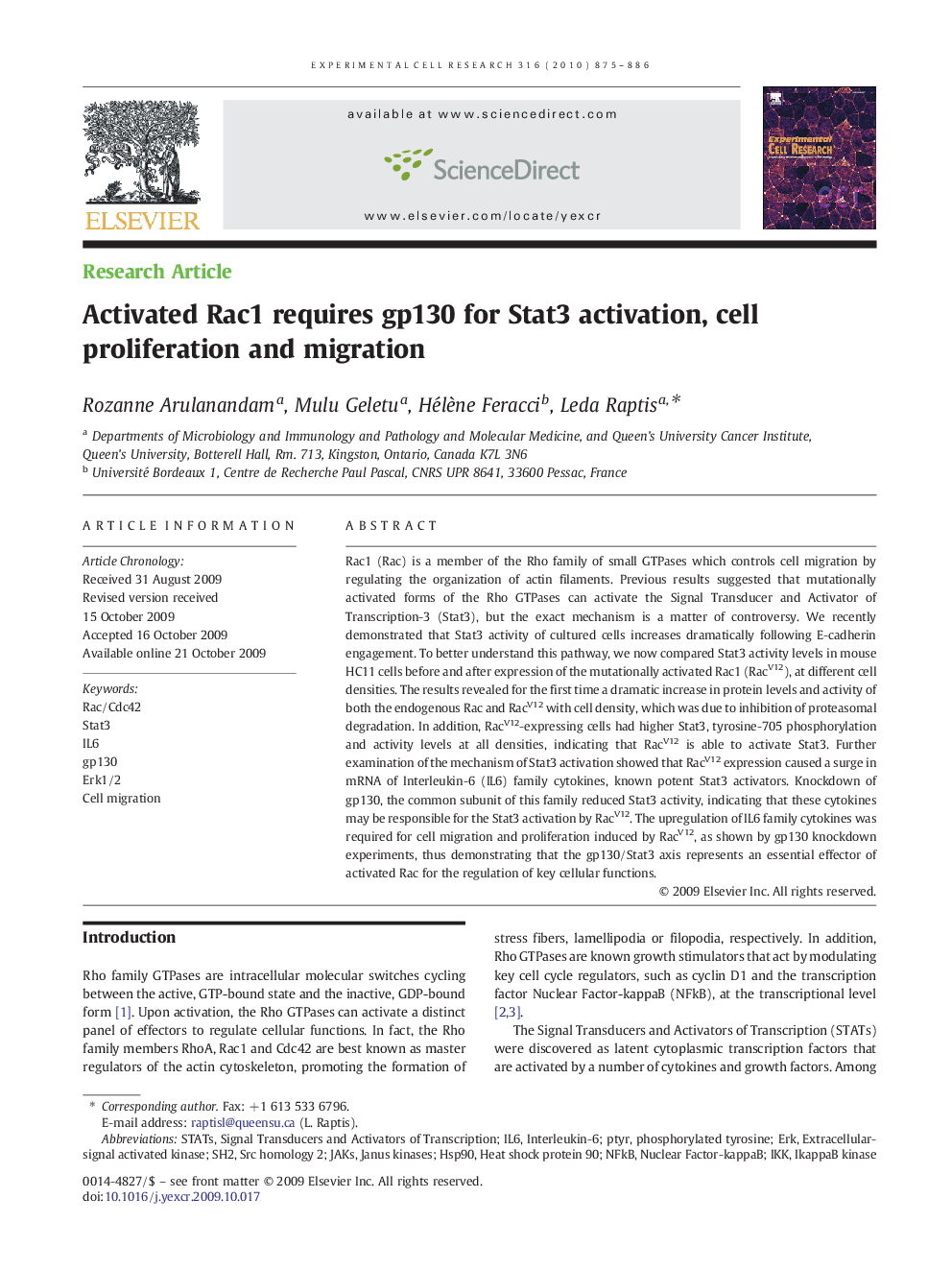| Article ID | Journal | Published Year | Pages | File Type |
|---|---|---|---|---|
| 2131173 | Experimental Cell Research | 2010 | 12 Pages |
Rac1 (Rac) is a member of the Rho family of small GTPases which controls cell migration by regulating the organization of actin filaments. Previous results suggested that mutationally activated forms of the Rho GTPases can activate the Signal Transducer and Activator of Transcription-3 (Stat3), but the exact mechanism is a matter of controversy. We recently demonstrated that Stat3 activity of cultured cells increases dramatically following E-cadherin engagement. To better understand this pathway, we now compared Stat3 activity levels in mouse HC11 cells before and after expression of the mutationally activated Rac1 (RacV12), at different cell densities. The results revealed for the first time a dramatic increase in protein levels and activity of both the endogenous Rac and RacV12 with cell density, which was due to inhibition of proteasomal degradation. In addition, RacV12-expressing cells had higher Stat3, tyrosine-705 phosphorylation and activity levels at all densities, indicating that RacV12 is able to activate Stat3. Further examination of the mechanism of Stat3 activation showed that RacV12 expression caused a surge in mRNA of Interleukin-6 (IL6) family cytokines, known potent Stat3 activators. Knockdown of gp130, the common subunit of this family reduced Stat3 activity, indicating that these cytokines may be responsible for the Stat3 activation by RacV12. The upregulation of IL6 family cytokines was required for cell migration and proliferation induced by RacV12, as shown by gp130 knockdown experiments, thus demonstrating that the gp130/Stat3 axis represents an essential effector of activated Rac for the regulation of key cellular functions.
